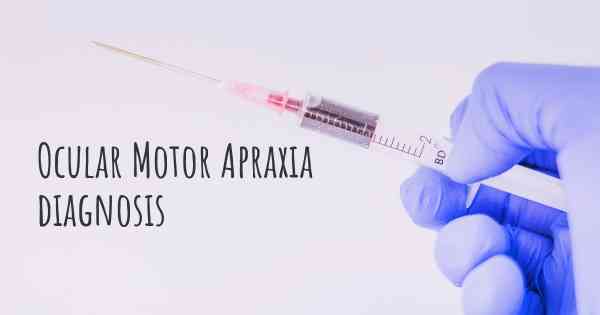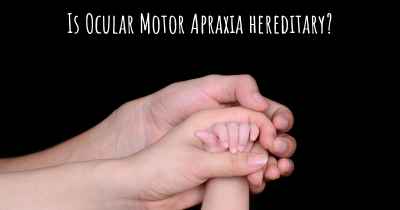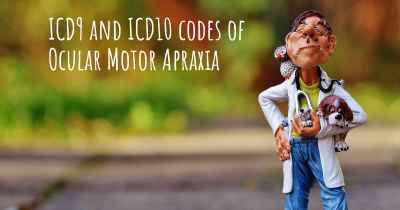How is Ocular Motor Apraxia diagnosed?
See how Ocular Motor Apraxia is diagnosed. Which specialists are essential to meet, what tests are needed and other useful information for the diagnosis of Ocular Motor Apraxia

How is Ocular Motor Apraxia diagnosed?
Ocular Motor Apraxia (OMA) is a neurological condition that affects eye movements and coordination. It is characterized by the inability to voluntarily control eye movements, leading to difficulties in visually tracking objects or shifting gaze. Diagnosing OMA involves a comprehensive evaluation by a healthcare professional, typically a neurologist or ophthalmologist, who specializes in movement disorders and visual impairments.
Medical History: The diagnostic process usually begins with a detailed medical history review. The healthcare provider will ask questions about the patient's symptoms, their onset, duration, and any associated factors. It is important to provide accurate information about any previous medical conditions, family history of eye disorders, or developmental delays.
Physical Examination: A thorough physical examination is conducted to assess the patient's eye movements, coordination, and overall neurological function. The healthcare provider will observe the patient's ability to follow objects with their eyes, perform specific eye movements, and maintain fixation on a target.
Eye Movement Testing: Several specialized tests are used to evaluate eye movements and identify any abnormalities. These tests may include:
- Smooth Pursuit: The patient is asked to track a moving target, such as a pen or a light, with their eyes. This assesses their ability to smoothly follow objects.
- Saccades: The patient is instructed to rapidly shift their gaze between two targets placed at different locations. This test evaluates the ability to make quick and accurate eye movements.
- Optokinetic Nystagmus: The patient watches a rotating drum or moving stripes while their eye movements are recorded. This test helps assess involuntary eye movements.
- Head Impulse Test: The patient's head is rapidly moved while they fixate on a target. This test evaluates the vestibulo-ocular reflex, which is responsible for stabilizing eye movements during head movements.
Neurological Examination: Since OMA can be associated with other neurological conditions, a comprehensive neurological examination is performed. This includes assessing muscle strength, reflexes, coordination, and sensory function. The healthcare provider will also look for any signs of developmental delays or cognitive impairments.
Additional Tests: In some cases, additional tests may be recommended to rule out other possible causes of eye movement abnormalities. These may include:
- Brain Imaging: Magnetic Resonance Imaging (MRI) or Computed Tomography (CT) scans can help identify any structural abnormalities or lesions in the brain that may be contributing to the symptoms.
- Genetic Testing: In certain cases, genetic testing may be performed to identify specific gene mutations associated with OMA or related conditions.
- Electroencephalogram (EEG): An EEG may be conducted to evaluate brain wave patterns and detect any abnormal electrical activity in the brain.
Once a comprehensive evaluation is completed, the healthcare provider will analyze the findings and make a diagnosis of Ocular Motor Apraxia. It is important to note that OMA is a rare condition, and its diagnosis requires expertise in assessing eye movements and neurological function. Therefore, seeking evaluation from a specialist is crucial for an accurate diagnosis and appropriate management of the condition.
Posted Nov 3, 2018 by Rose_Puff 2500








